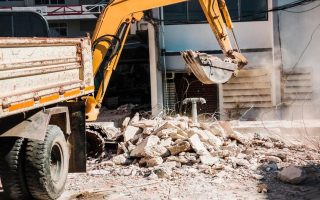15 years ago, Bruce Willis and an all-star cast made a blockbuster film called Armageddon. This outlandish tale told the story of a group of gung-ho, deep-core drillers who flew into space to bore into an asteroid that was on a potentially catastrophic collision course with the Earth and mine a bomb into the centre of the rock so that it would blow up and save mankind.
Whilst this film was intended to be nothing more than a slightly more gimmicky alternative to Deep Impact during the summer of 1998, it might actually be regarded as being somewhat prophetic now.
Far from being scary things that force ageing Hollywood A-listers into saving the day, experts are now of the opinion that Near-Earth Asteroids (NEAs) could actually be of great benefit to mankind. The reason for this is that NEAs are considered to harbour valuable raw materials within them which have become relatively short in supply here on the Earth.
Exploiting precious metals and vital resources from asteroids; sounds pretty far-fetched, huh?
Well perhaps not.
Whilst NASA may be less than enthusiastic about the possibility of mining NEAs, private enterprise is keen – more than keen, in fact – to make it happen. In fact, some of the world’s richest people have already decided to take things into their own hands.
Planetary Resources, a start-up company with plans to mine NEAs, is backed by incredibly rich and influential players like Google executives Larry Page and Eric Schmidt, Microsoft visionary (and space traveller) Charles Simonyi, film director James Cameron, billionaire Ross Perot and X Prize founder Peter H. Diamandis.
The goal of Planetary Resources is to find – and mine – two major things in space which will hopefully add trillions of pounds to global commodity prices: water and precious metals (such as platinum and palladium).
Peter H. Diamandis has been quoted as saying: ‘Everything we hold of value on Earth – metals, minerals, energy, water, real estate – are literally in near-infinite quantities in space’. Suffice to say, the economic appeal of this ambitious venture – in relation to the commodity industry – more than justifies the interest. After all, precious metals, such as gold and platinum, sell for around US$50,000 per kilo. Using this as a commodity pricing standard, one small asteroid can be valued as being worth somewhere around US$30 billion!
Within a few weeks of unveiling its plans to the public last year, Planetary Resources received thousands of job applications from engineers looking to help design and build a fleet of asteroid-mining robotic probes. As incredible and far-fetched as this may seem to some, it is just a logical step in the right direction for those ‘in the know’.
Perhaps Planetary Resources co-founder Eric Anderson should have the last word: ‘If you believe it’s important to have continued prosperity for future generations, we need resources from somewhere. Near-Earth Asteroids are way, way more appealing than just about any other place we might look’.



